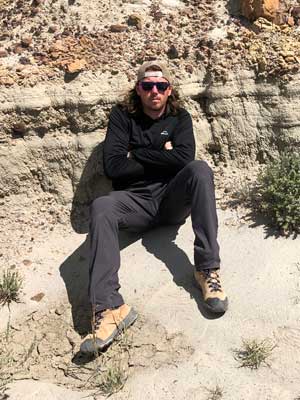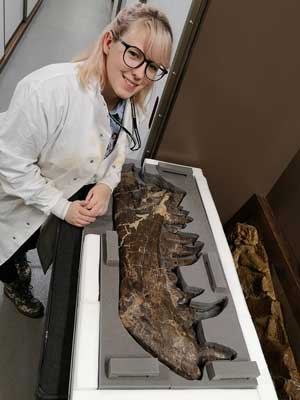Hell Creek Site
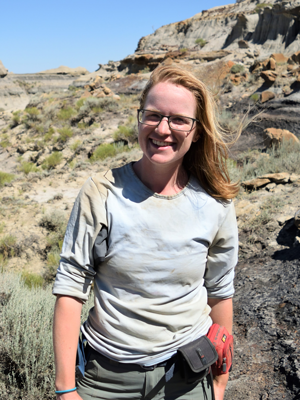 Paige Wilson Deibel, PhD (she/her)
Paige Wilson Deibel, PhD (she/her)
Paleobotany Collections and Lab Manager, Burke Museum, University of Washington
Paige is a paleobotanist — someone who studies ancient plant life and what it can tell us about environments and ecosystems. She manages the Burke Museum’s paleobotany collections, which include over 70,000 plant fossils from around the world. Paige especially enjoys when her fieldwork takes her to places with unique geology and paleontology — and gorgeous nature — to see and learn from.
Who is a teacher who inspired your interest in STEM and/or paleontology?
“Dr. Dorsey-Mott, my high school biology teacher… while I was generally more of a reading, writing, and history enthusiast in school, Dr. Dorsey-Mott was one of the first teachers who made me feel like I was good at science and math. She helped me to get an internship at a pharmaceutical company and generally encouraged me to try out different parts of biology to find out what I was passionate about!”
Brody Hovatter (he/him)
2024 DIG Fellow; Earth & Space Science PhD Student, University of Washington
Brody is a PhD student at the University of Washington studying the evolution and ecology of ancient mammals. He’s especially interested in mammals that lived after the extinction of most of the dinosaurs — with birds, the only modern dinosaurs, being the exception. Field work lets Brody work with lots of interesting people and spend quality time in nature.
Who is a teacher who inspired your interest in STEM and/or paleontology?
“Mrs. Jennifer Veterane, one of my high school science teachers, whose mnemonic devices helped me pass some of my college chemistry classes.”
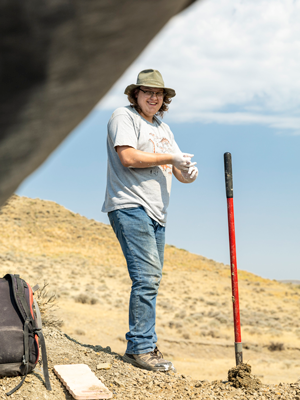 Ezekiel (Zeke) Augustine (he/him)
Ezekiel (Zeke) Augustine (he/him)
2024 DIG Fellow; 2024 Biology Graduate, University of Washington
Zeke is a recent graduate of the University of Washington. In his years here, he has studied theropod dinosaurs from Hell Creek — including Tyrannosaurus rex — and has been an educator at the Burke Museum’s monthly ‘Fossil Finders’ events. He enjoys finding fossils in the field, but his favorite part of field work is getting to know new people.
Who is a teacher who inspired your interest in STEM and/or paleontology?
“Being homeschooled through high school, I am very grateful to my parents… they helped me attend a microfossil sorting workshop run by fellow Hell Creek DIG instructor Brody Hovatter. Getting the opportunity to work with fossils and hear about field work from someone who spoke so passionately about the area of study — at a time when I wasn’t even old enough to learn how to drive — cemented my desire to make [paleontology] my career. I will always be grateful both for that initial experience Brody facilitated, as well as the mentorship he has provided since.”
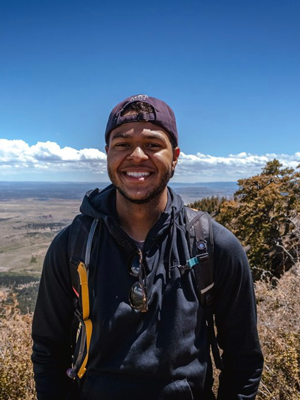 Isiah Newbins (he/him)
Isiah Newbins (he/him)
2024 DIG Fellow; Biology PhD student, University of Washington
Isiah is a PhD student at the University of Washington studying mammals from the Cretaceous period. He specifically looks at how environmental factors during this time — like the evolution of flowering plants — impacted mammal diversity. His research may help us understand how we reached the mammal biodiversity we have today.
Who is a teacher who inspired your interest in STEM and/or paleontology?
“Oh, definitely my high school biology teacher Mrs. Gold. She saw that I had a budding interest and connected me with the right tools to develop it into a passion even though my performance in her class was mediocre at best. She knew about our local museum's paid teen intern program and helped me apply for it (TWICE) and the rest is history.
“Also, special shout out to my business and art teachers, Mr. Becker and Mr. Roberts. Before confirming my love for science, I wanted to do something in the business or art realm… [After,] they gave me loads of honest and straight-up love and support — pushing me to try my hardest, letting me explore my newfound passion in their classes, and offering to write me letters of recommendation when it came time to apply for college. The two of them were also really good friends, so I like to think they were conspiring for my good!”
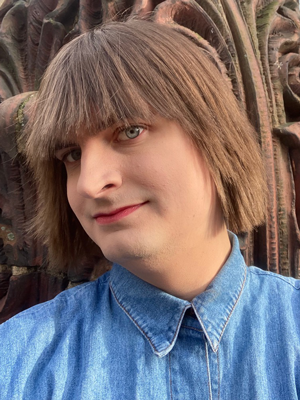 Jacqueline Silviria (she/they)
Jacqueline Silviria (she/they)
2024 DIG Fellow; Earth & Space Science PhD Student, University of Washington
Jacqueline is a PhD student at the University of Washington studying ancient mammals. She looks at fossils from the first 100,000 years after the Cretaceous-Paleogene mass extinction that wiped out most of the dinosaurs. Her favorite study subjects are archaic ungulate s— a type of hoofed mammal. Jacqueline studies their teeth to learn more about their relationships to each other and to modern animals.
Who is a teacher who inspired your interest in STEM and/or paleontology?
“I didn't get into the weeds of mammal paleontology until rather late in my undergraduate education… when I met Thomas Williamson, curator at the New Mexico Museum of Natural History & Science, at a New Mexico Geological Society meeting. [He] taught me much of what I know about mammalian dental anatomy, phylogenetic systematics, and paleobiogeography.”
“I remember my time as his student during fieldwork in the San Juan Basin very fondly, and his influence on my scientific trajectory is so strong that — at the risk of sounding vain — I often think I approach scholarly problems the same way he does.”
Petrified Forest (PEFO)
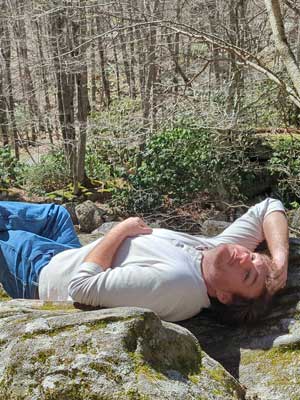 Mark Nohomovich (he/him)
Mark Nohomovich (he/him)
Paleobiology PhD Student, Virginia Tech
Mark is a PhD student at Virginia Tech studying comparative anatomy and how form can change based on an animal’s ecology. He has not yet had a chance to get out into the field, and is excited for the opportunity to see the full process of studying fossils — from discovering them in the ground to examining them back in the lab.
Who is a teacher who inspired your interest in STEM and/or paleontology?
“My senior year high school biology teacher, Ms. Gilbert. Being a first-generation college student, I never thought I had what it took to succeed in college [and] I did not plan on going to college until I met her. She saw something special in me and said if I applied myself, I could succeed because I have the brain to do so. My core memory with her was going to multiple kestrel nests in Sussex County, New Jersey to count eggs in a nesting box… this was my first dive into research.”
Emily Keeble (she/her)
Vertebrate Paleontology PhD student, Virginia Tech
Emily is a PhD student at Virginia Tech studying a group of reptiles called archosaurs. She focuses on variations and changes in archosaur teeth throughout the Late Triassic. She also hopes her work will make it easier for researchers to identify lone reptile teeth.
Who is a teacher who inspired your interest in STEM and/or paleontology?
“Shout out to Mr. Willbrougham — my high school biology/chemistry teacher. The man was such a legend at school that he had his own Facebook fan page.”
“[One time] we were using extremely weak hydrochloric acid and were terrified of it. He came into the classroom and told us: ‘don't worry, this stuff is so weak you can wash your hands in it!’ with which he poured a bottle of acid over his hands… We heard a shriek like he was in pain and watched him run out of the classroom, hands raised. Really set the tone for the next five years.”
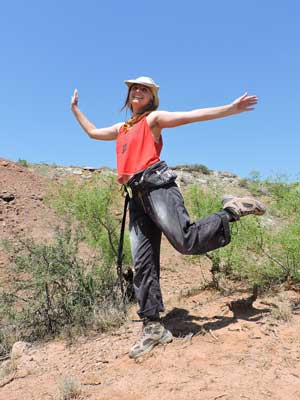 Helen Burch (she/her)
Helen Burch (she/her)
Vertebrate Paleontology PhD Student, Virginia Tech
Helen is a PhD student at Virginia Tech studying Triassic ecosystems. She’s especially interested in functional diversity — the variety of roles animals play in their communities. In the field, Helen is working on ways to identify an animal’s functional traits from even a tiny microfossil.
Who is a teacher who inspired your interest in STEM and/or paleontology?
“When I was in middle school, Dr. Glenn Jaecks, a professor from our local community college, shared with me his love of fossils. He showed me the school's invertebrate collections, along with the skeletons of a dire wolf and saber-toothed cat. While I was so excited to see these fossils in real life, Dr. Jaecks also [explained] concepts of evolution, phylogenetics, and earth history which gave the fossils infinite meaning and importance to me.”
